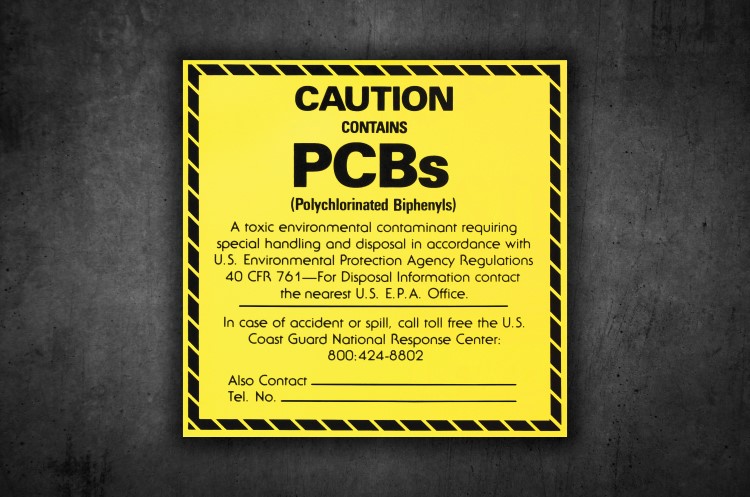PCBs (Polychlorinated Biphenyls) are an organochlorine class of synthetic oil-like compounds. They were described in the technical literature for the first time in 1881, and commercial manufacture began in the late 1920s. They were commonly utilized as insulation in electrical equipment for many years
(especially transformers). When it was discovered that they were toxic, their use was prohibited in the early 1980s.
They are toxic compounds that have been discovered to affect wildlife as well as human reproductive, neurological, and immune systems. Since they are stable in their environment and decay slowly, they can cause major health issues from the food they contaminate to the being that consumes them.
One of the most serious problems with PCBs is their accumulation in the oily parts of microorganisms. The concentration factor between the organism and the water can reach one million. Concentrations can climb much higher as microorganisms become food for animals higher up the food chain, significantly impacting every living creature in the food chain.
When people are exposed to elevated levels of PCBs, they can develop a number of health problems such as cancer, depression, burnout, and low birth weight. Since PCBs in the body specifically mimic estrogen, women of childbearing age and their children may face a variety of developmental and reproductive issues. In fact, according to the US National Academy of Sciences Committee, PCBs have the highest potential carcinogenic risk of any environmental pollutant for which measurements are known.
Because of the risks to the environment and living beings, the use of PCBs has been banned globally, and international agreements have been developed for the disposal of the chemical. Some noteworthy developments in this regard are as follows:
- 1976: PCBs and 12 pollutants were prohibited in the United States.
- 1983: PCB manufacture was prohibited in the Federal Republic of Germany.
- 1987: PCBs were prohibited in France.
- 1989: Basel Convention was signed.
- 1993: PCBs were prohibited in Turkey.
- 1995: The Barcelona Convention to protect the Mediterranean Sea was signed (after some international conventions in 1992).
- 1996: PCBs were prohibited throughout Europe.
- 2001: Stockholm Convention on the reduction of Persistent Organic Pollutants (POPs) was signed.
- 2004: In the same year that the Stockholm Convention entered into force, PCBs were prohibited worldwide.
The Stockholm Convention was signed by Turkey in 2001 and entered into force in 2009 to decrease the impacts of PCBs and their derivatives on human
health and the environment. Furthermore, during the EU harmonization procedure, the rule created by harmonizing the European Commission Directive 96/59/EC dated 16.09.1996 on the removal of PCBs and PCTs was published in the Official Gazette on December 27, 2007, with the number 26739.
We propose that PCB analysis, which is also classified as Group 3 in transformer oil analysis, be performed and evaluated in a recognized laboratory at least once a year for each transformer using the I.S EN 61619:1999 technique.
Based on analysis, if the PCB value is;
- PCB < 50 ppm; to avoid cross-contamination of PCB-containing equipment, all PCB-containing equipment, regardless of PCB composition, should be disposed of before 2028.
- 50 ppm < PCB < 500 ppm; the preventive methods prescribed in the recommendation should be used and disposed of by 2025.
- 500 ppm < PCB; equipment should be removed and disposed of in authorized facilities.
As a result, risk management should be carried out in accordance with the findings of each analysis, and action plans should be implemented immediately. Oil analysis, on the other hand, will help you achieve your objectives such as occupational health and safety and sustainability. Instead of taking risks, manage them by through measurement.
Source:
- “Guide For Polychlorinated Biphenyl (PCB) Management of Insulating Oil IN South Africa” By I.A.R. Gray Dated: August 2004
- “Identification, Management, and Proper Disposal of PCB-Containing Electrical Equipment used in Mines”, Dan Bench, U.S. Environmental Protection Agency
- “Türkiye’deki Poliklorlu Bifenillerin (PCBS) Çevreyle Uyumlu Yönetimi İçin Rehber”, Jean Hetzel ve Ömer Hallaç, Çevre ve Şehircilik Bakanlığı ve UNIDO Tarafından Yayımlanan Kılavuz, 2017













